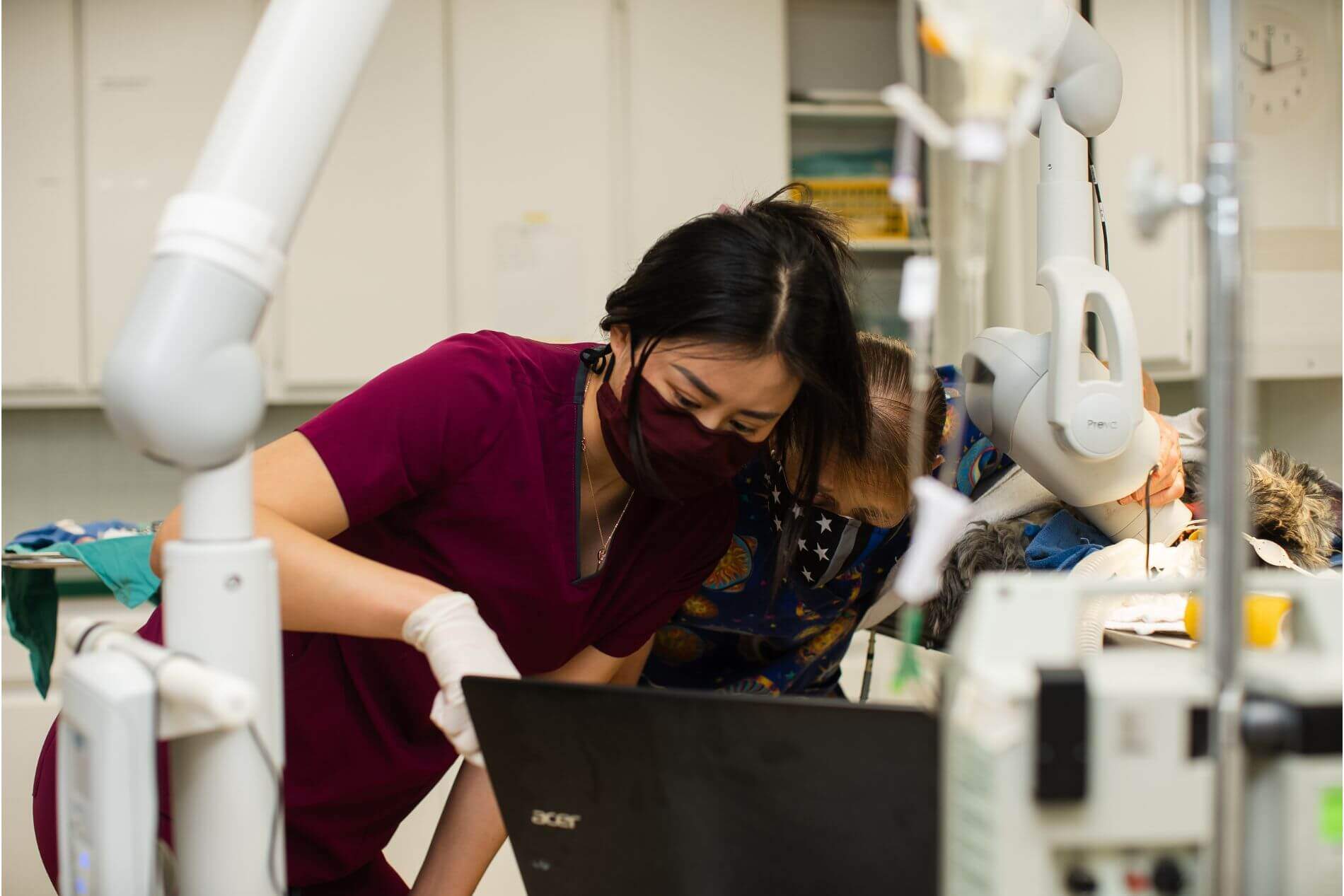
Pet Digital X-Ray
Pet digital radiology, or digital X-rays, is a cutting-edge imaging technique to identify and treat different animal medical issues.
We offer high-quality cat and dog x-rays near you. Our radiology system uses X-rays transmitted through your pet’s body that are then picked up by a digital detector. Veterinarians transform these into high-resolution digital images which they use to identify any underlying medical issues.
Pet digital radiology is non-invasive and painless. .
Pet owners tend to favor digital radiology because it gives them access to a quick and precise diagnosis of their pet’s condition thanks to the highly accurate and detailed images. Veterinarians can spot even the slightest abnormalities or injuries, and pet owners can make knowledgeable decisions about the health of their animals.
Jessie Massoudi
Pet Digital X-ray
A digital pet X-ray is a diagnostic imaging method that creates finely detailed images of an animal's internal organs using digital technology. Compared to conventional film X-rays, it provides quicker results, better image quality, less radiation exposure, and simple storage and sharing. It is frequently used to identify a range of medical issues in animals.
In medical imaging, X-rays are typically produced by an X-ray machine, emitting an X-ray beam pointed at the patient's body, in this case, your pet. An internal body image is produced as the X-rays travel through the body and are absorbed to varying degrees by various tissues. Because they absorb more X-rays than soft tissues like muscle or fat, dense materials like bones appear white on an X-ray image.
X-rays are helpful in medical imaging, but if used carelessly, they can also be dangerous. High X-ray exposure can harm living tissues and raise the risk of developing cancer. As a result, X-ray procedures are typically only performed when necessary and with the proper safeguards to reduce the risk of radiation exposure.
Veterinarians use X-rays to identify several conditions in animals. X-rays can detect joint issues, bone fractures, and other orthopedic conditions. They can also be used to search for foreign objects that an animal may have ingested, like a toy or a piece of metal that was swallowed.
X-rays can also diagnose issues with the chest, abdomen, bones, and joints. For instance, X-rays can be used to spot lung conditions like pneumonia or lung cancer or to spot changes in the heart's size and shape.
If your pet needs an X-ray, there are a few things you can do to help them get ready:
- Follow instructions given by your veterinarian.
- Bring required paperwork.
- Consider using sedation.
- Take away any metal items.
Depending on the individual pet and the situation, an X-ray may or may not require sedation.
Sedation may be required before the X-ray in the case of anxious, combative, or uncooperative pets. This is specifically true for X-rays of the limbs or the head because it may be challenging to position and for your pet to stay still enough to capture a quality image.
When conducted correctly and with the necessary precautions, X-rays can be safe for dogs and cats. Nevertheless, X-rays have some risks, like any medical procedure, mainly if done too frequently or without the proper safety precautions.
Radiation exposure is one of the main dangers of X-rays. Living tissues may be harmed by radiation exposure, including DNA damage that raises the risk of developing cancer. However, X-rays typically expose very little radiation, and the advantages of the diagnostic data they can provide usually outweigh the risks.
When taking X-rays, veterinarians take several safety measures to reduce the risk of radiation exposure to your pet. In addition to using specialized positioning devices to help keep the animal still throughout the procedure, the staff may also use lead aprons and shields to protect themselves. Smaller animals also use lower radiation doses or shorter exposure times and restrict the number of X-rays taken.
The cost of your pet's X-ray can vary depending on the injury's severity.
Get Care
© 2025 Dr. Domotor's Animal House | Privacy Policy



